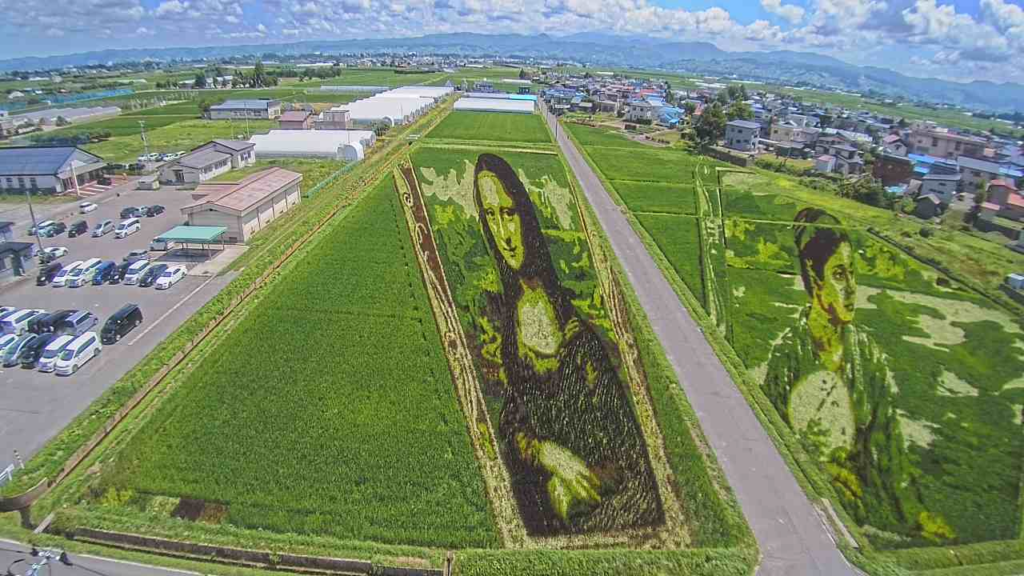
The Japanese town of Inakadate has been converting its fields into living artworks every year since 1993. By arranging many rice species in intricate patterns, they produce amazing rice paddy art, drawing on their tradition as an agricultural community. The project for this summer features two well-known female portraits from both Western and Eastern art history.
The famous Mona Lisa by Renaissance artist Leonardo da Vinci is displayed on one side, and the painting Lakeside by Japanese artist Seiki Kuroda from the 19th and 20th centuries, which includes a portrait of his wife Taneko Kaneko, is displayed on the other. Seven distinct varieties of rice are used to create both of these figures, and when they are fully bloomed, they contribute to the contrast needed to replicate the hues and depth of the original works of art.
The magnitude of rice paddy art necessitates considerable planning in order to be adequately carried out. All of the intricate designs in Inakadate were created by former high school art teacher Atsushi Yamamoto, who used a computer to convert the color schemes of the original painting into something that could be duplicated using only seven different shades of rice from a field.
The rice paddy artwork for this year is on display from mid-June through early October. To see more images of their rice paddy art, like Inakadate Village on Facebook. Additionally, they have a page set up on their website where they highlight the daily crop color changes that occur naturally through the end of October.
The Japanese town of Inakadate is renowned for its intricately planned and planted rice paddy artwork constructed from seven different hues of farm field rice.

This year, they captured two famous female portraits from art history—Mona Lisa and Taneko Kaneko.


Leave a Reply